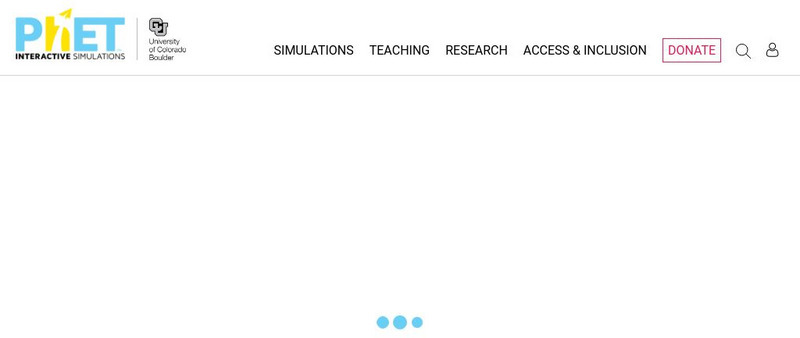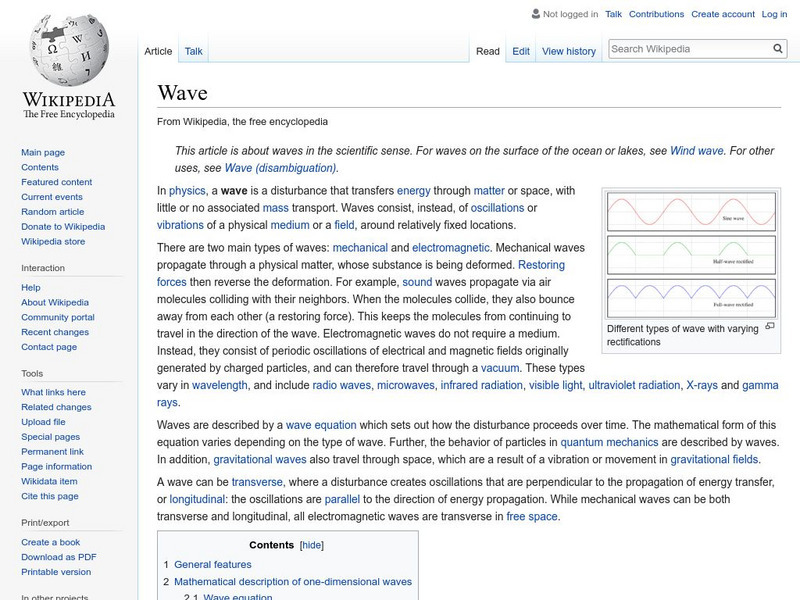Hi, what do you want to do?
Georgia Department of Education
Ga Virtual Learning: Moving Water
Students learn about surface currents, wave characteristics, and the forces that cause tides in the World Ocean.
Physics Classroom
The Physics Classroom: Formation of Standing Waves
How are standing wave formations formed? Why are they only formed when the medium is vibrated at specific frequencies? What makes these so-called frequencies so special and magical? These questions are answered in this exploration of...
Physics Classroom
The Physics Classroom: Nodes and Antinodes
In this thorough lesson, nodes and antinodes are explained and compared to crests and troughs. A "Check Your Understanding," set of questions is included at the end of the lesson with answers.
Physics Classroom
The Physics Classroom: The Nature of a Wave
A very good introduction to the world of waves. Waves and wavelike motion, what is a wave, and categories of waves are the topics examined in this site. Many links to other wave sites.
Physics Classroom
The Physics Classroom: Behavior of Waves
Boundary behavior, incident pulse, reflected pulse,and transmitted pulse are explained in this thorough tutorial. Animation and drawings are used to clarify the concepts.
University of Colorado
University of Colorado: Ph Et Interactive Simulations: Wave Interference
Conduct virtual experiments with water, sound, and light waves to determine the sine wave and patterns created in each.
Wikimedia
Wikipedia: Wave
An in-depth encyclopedia article from Wikipedia on waves gives a definition for what a wave is. Other content in the article includes a list of examples and characteristics of waves, information about the difference between transverse...
Physics Classroom
The Physics Classroom: The Wave Equation
A thorough explanation of the wave equation (Speed = Wavelength * Frequency). A data table and questions to check one's understanding are also part of this lesson.
Physics Classroom
The Physics Classroom: The Doppler Effect
At this tutorial, a happy bug in the center of a circular water puddle is used to describe the Doppler effect.
Physics Classroom
The Physics Classroom: Traveling Waves vs. Standing Waves
Traveling and standing waves are thoroughly explained through the use of drawings and animation.
Physics Classroom
The Physics Classroom: Energy Transport and the Amplitude of a Wave
The energy transport phenomenon and amplitude are explored in this lesson. Questions are found at the end of the lesson to check understanding of the concepts presented.
Other
Absorb Learning: Properties of Waves
An interactive introduction to the properties of waves with descriptions, animations, and questions.
Khan Academy
Khan Academy: Calculating Frequency and Wavelength From Displacement Graphs
Practice using a displacement graph and wave speed to find the frequency and wavelength of a wave.









